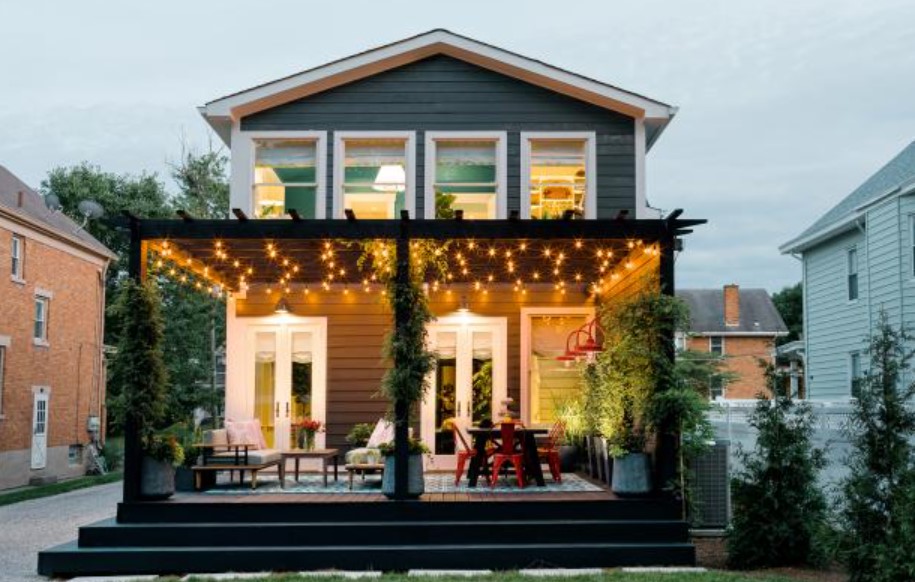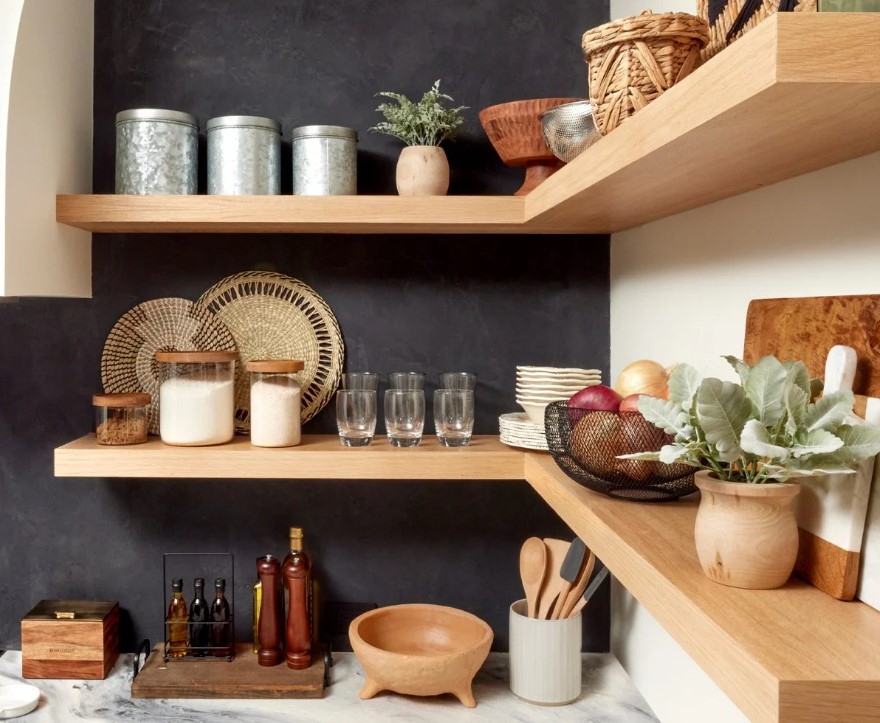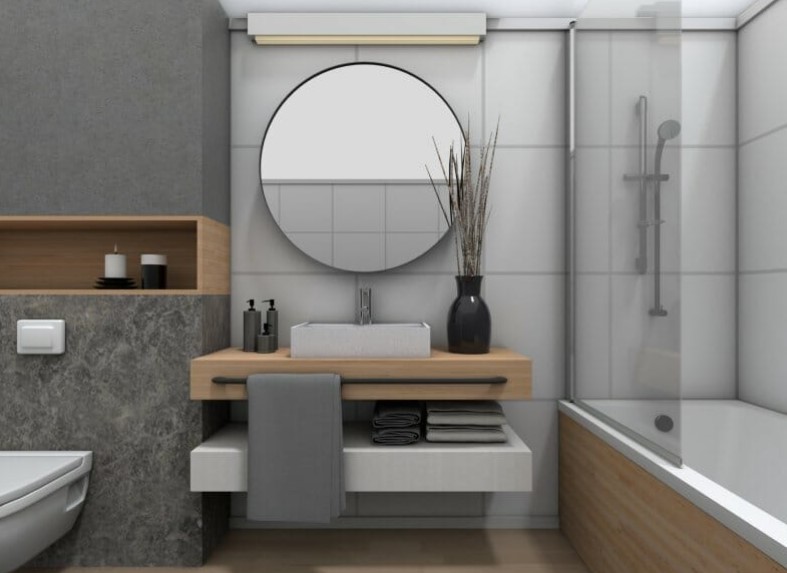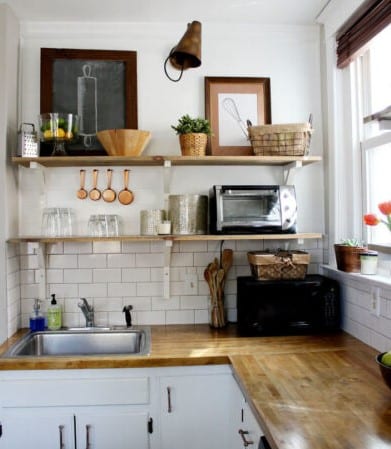DIY Home improvement projects can be both exciting and daunting, especially when you’re taking the DIY route.
Whether you’re a seasoned DIYer or a complete beginner, there’s something immensely satisfying about enhancing your living space with your own hands.
In havenblueprint.com, we’ll explore various DIY home improvement projects that are budget-friendly and easy to tackle, providing you with detailed instructions, benefits, and product comparisons to help you get started.
Essential Tools for DIY Home Improvement Projects
Before diving into specific projects, it’s crucial to have the right tools on hand. A basic toolkit should include a hammer, screwdrivers, tape measure, level, power drill, and saw. Investing in quality tools can make your projects smoother and more enjoyable.
In addition to the basics, consider expanding your toolkit with more specialized tools, such as a stud finder, utility knife, and adjustable wrench.
These tools are essential for tasks like locating wall studs for hanging heavy items, cutting various materials, and assembling or disassembling furniture.
Having a comprehensive set of tools ensures you’re prepared for a wide range of home improvement projects, from simple repairs to more complex renovations.
DIY Home Renovation on a Budget
DIY Home Projects renovation on a budget can be both rewarding and cost-effective, allowing homeowners to transform their spaces without breaking the bank.
Start by prioritizing projects that will add the most value, such as refreshing paint, updating fixtures, or enhancing curb appeal with landscaping.
Utilize reclaimed materials and shop at discount retailers or thrift stores for unique finds that can be repurposed creatively.
Planning and research are crucial; set a realistic budget and timeline to avoid overspending.
Engage in DIY tasks like tiling, installing shelves, or crafting furniture to save on labor costs, while also enjoying the satisfaction of personal involvement in the renovation process.
With careful planning and creativity, you can achieve stunning results that reflect your personal style without compromising your financial goals.
Budget-Friendly Ideas
Renovating your home doesn’t have to break the bank. There are numerous DIY home renovation projects you can undertake that are cost-effective yet impactful.
Simple updates like painting walls, replacing hardware, or installing new light fixtures can dramatically change the look and feel of a space without a hefty price tag.
Exploring budget-friendly renovation ideas allows homeowners to refresh their spaces while staying within budget.
Adding affordable decor updates like new curtains, wall art, or shelving can elevate a room’s aesthetic without extensive remodeling.
For an even bigger impact, consider refinishing cabinets, updating flooring with peel-and-stick tiles, or repurposing thrifted furniture.
These simple yet effective changes can help create a stylish and personalized home environment on a budget.
Expand on Details:
- Painting Walls: Repainting your walls is one of the most cost-effective ways to refresh your home. Choose colors that reflect your personality and complement your existing décor. When selecting paint, opt for high-quality brands that offer good coverage and durability. For a professional finish, take your time with preparation—clean and sand the walls, apply painter’s tape for clean edges, and use primer if necessary.
- Replacing Hardware: Changing out cabinet handles, drawer pulls, and doorknobs is a simple yet impactful update. Opt for modern designs or vintage pieces to match your home’s style. This project requires minimal tools and can be completed in just a few hours.
- Installing New Light Fixtures: Updating your lighting can transform the ambiance of a room. Consider energy-efficient options like LED fixtures or smart bulbs that can be controlled via smartphone apps. Proper lighting can highlight your home’s best features and create a welcoming atmosphere.
You can also read : DIY Kitchen Remodel: Transform Your Space on a Budget
Cost-Saving Tips
One of the best ways to save money on home improvement projects is by repurposing materials.
For example, using reclaimed wood for shelving or countertops not only adds character to your home but also reduces costs.
Shopping for materials during sales or at discount stores can also help keep your budget in check.
Expand on Details:
- Reclaimed Wood: Reclaimed wood can be sourced from old barns, factories, or even shipping pallets. It offers a rustic, weathered look that adds warmth and texture to your home. Use it for shelving, accent walls, or even as a countertop material in your kitchen.
- Shopping During Sales: Many home improvement stores offer seasonal sales where you can find significant discounts on materials and tools. Look for clearance items or ask store employees about upcoming sales. Additionally, consider signing up for store newsletters to receive coupons and special offers.
Top DIY Home Improvement Projects for Beginners
Painting and Wallpapering
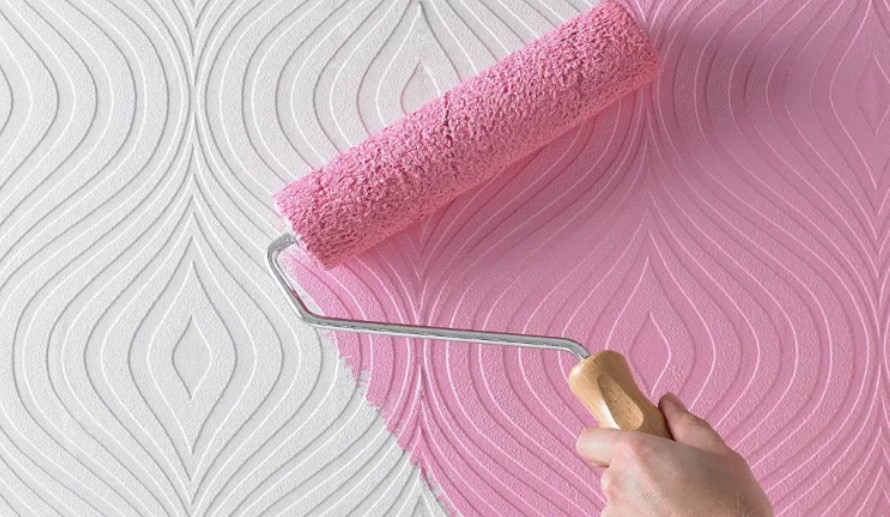
Painting is one of the easiest DIY projects that can have a significant impact on your home.
Whether you’re refreshing a room with a new coat of paint or adding an accent wall, this project is perfect for beginners.
Expand on Details:
- Choosing the Right Paint: When selecting paint, consider the room’s purpose and lighting. For example, light colors can make a small room feel larger, while darker shades add coziness to larger spaces. Also, decide between matte, eggshell, or gloss finishes based on the room’s function and the desired aesthetic.
- Wallpapering Tips: Wallpapering might seem intimidating, but with the right tools and techniques, it’s a manageable project. Start with an accent wall or small room to get the hang of it. Choose a pattern that complements your existing décor, and ensure you purchase enough rolls to match the pattern across the entire wall.
Benefits:
- Transformative: A fresh coat of paint can completely change the vibe of a room.
- Affordable: Paint and supplies are relatively inexpensive.
- Customizable: Choose colors and patterns that reflect your style and personality.
Installing Shelving
Adding shelves is another beginner-friendly project that serves both functional and aesthetic purposes.
Shelves can help you declutter your space while also providing a platform to display your favorite items.
In addition to improving organization, installing shelves can transform empty walls into practical storage solutions, maximizing the use of vertical space in any room.
Shelving units are versatile and can be tailored to various styles, whether you prefer minimalist floating shelves, industrial-style metal frames, or rustic wooden boards.
Expand on Details:
- Floating Shelves: Floating shelves offer a modern, minimalist look. They’re great for displaying books, plants, and decorative items without taking up floor space. Install them in living rooms, bedrooms, or even bathrooms for extra storage.
- Bracket Shelves: If you prefer a more industrial or rustic style, consider using metal brackets with wooden planks. This type of shelving is sturdy and versatile, allowing you to mix and match different materials to achieve your desired look.
Benefits:
- Space-Saving: Shelves provide additional storage without taking up floor space.
- Versatile: Use shelves in any room, from the living room to the bathroom.
- Personalized: Customize the size, color, and style of your shelves to match your decor.
You can also read : DIY Bathroom Renovation: Upgrade Your Space on a Budget
Easy DIY Home Remodel Projects
Kitchen Backsplash Installation
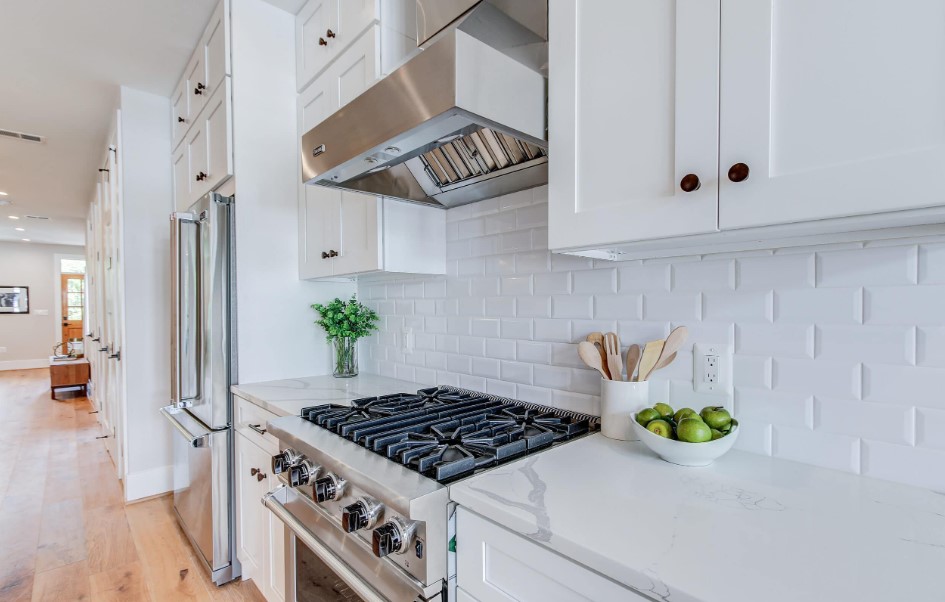
Upgrading your kitchen with a new backsplash is an easy DIY project that adds a touch of elegance to your space.
There are various materials available, from classic subway tiles to modern peel-and-stick options.
Expand on Details:
- Subway Tiles: Subway tiles are a timeless choice for kitchen backsplashes. They’re durable, easy to clean, and come in a variety of colors and finishes. Consider arranging them in a herringbone or stacked pattern for a modern twist.
- Peel-and-Stick Tiles: For a quick and affordable update, peel-and-stick tiles are an excellent option. These tiles come in a range of designs, including faux marble and metallic finishes, allowing you to achieve a high-end look without the hassle of traditional tile installation.
Benefits:
- Aesthetic Appeal: A backsplash adds visual interest and complements your kitchen’s design.
- Easy Maintenance: Backsplashes protect walls from stains and are easy to clean.
- Cost-Effective: Peel-and-stick options are affordable and simple to install.
Example Product:
- Product: Peel and Stick Subway Tile Backsplash
- Where to Buy: Home Depot
- Price: $25 per sheet
- Pros: Easy to install, budget-friendly, stylish
- Cons: May not be as durable as traditional tiles
Detailed Product Comparisons for DIY Projects
Peel and Stick Backsplash Tiles vs. Traditional Tiles
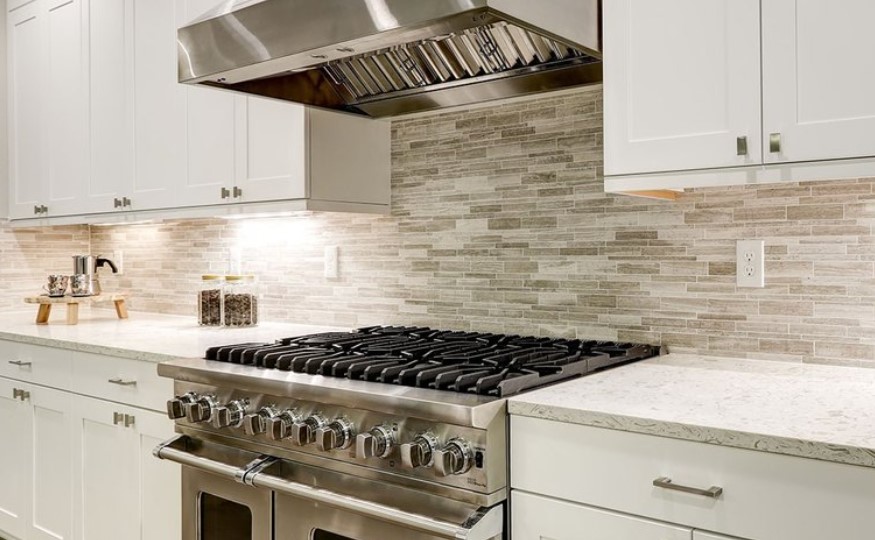
Choosing between peel and stick backsplash tiles and traditional ceramic tiles can depend on several factors such as budget, durability, and ease of installation.
Peel and Stick Backsplash Tiles
- Price: More affordable, typically around $10-$25 per sheet.
- Installation: Easy to install, no grout or special tools needed.
- Durability: Less durable than ceramic, but suitable for renters or temporary updates.
Traditional Ceramic Tiles
- Price: Higher upfront cost, around $30-$50 per square foot.
- Installation: Requires more skill and time, but offers a permanent solution.
- Durability: Highly durable and resistant to heat and moisture.
Real World Example Products for DIY Home Improvement Projects
1. Product: Rust-Oleum Chalked Ultra Matte Paint
- Where to Buy: Amazon
- Price: $20 per quart
- Pros: Easy to apply, fast-drying, available in multiple colors
- Cons: May require multiple coats for darker colors
- Use Case: Perfect for painting furniture, cabinets, and decorative items. This paint provides a vintage look and can be distressed for added character.
2. Product: Kreg K4 Pocket Hole Jig System
- Where to Buy: Lowe’s
- Price: $99.99
- Pros: Durable, easy to use, creates strong joints
- Cons: Higher upfront cost, requires additional tools like a drill
- Use Case: Ideal for building shelves, cabinets, and other woodworking projects. The Kreg Jig makes creating pocket holes simple and accurate, resulting in professional-looking joints.
3. Product: Behr Premium Plus Interior Paint and Primer in One
- Where to Buy: Home Depot
- Price: $32 per gallon
- Pros: Excellent coverage, low odor, washable finish
- Cons: Slightly higher cost compared to standard paint
- Use Case: Best for walls and ceilings, this paint-and-primer combo saves time and effort by reducing the number of coats needed. It’s available in a wide range of colors to suit any room.
Another Real World Example Products for DIY Home Improvement Projects
1. Product: Command Picture Hanging Strips
- Where to Buy: Amazon
- Price: $10 per pack
- Pros: No damage to walls, easy to remove, strong hold
- Cons: Limited weight capacity
- Use Case: Perfect for hanging pictures, artwork, and other lightweight items without damaging walls. These strips are ideal for renters or those who like to frequently change their décor.
2. Product: Ryobi 18V One+ Cordless Drill/Driver Kit
- Where to Buy: Lowe’s
- Price: $79.99
- Pros: Lightweight, powerful, versatile
- Cons: Battery life may vary depending on use
- Use Case: Essential for a variety of DIY projects, from assembling furniture to installing shelves. The cordless design offers flexibility, and the kit includes a charger and two batteries for continuous use.
You can also read : DIY Kitchen Renovation: Transform Your Space on a Budget
Benefits of DIY Home Improvement Projects
Cost Efficiency
One of the main reasons homeowners opt for DIY projects is the cost savings. Labor costs can make up a significant portion of home improvement expenses.
By doing the work yourself, you can save a substantial amount of money that can be used for other projects or enhancements.
Expand on Details:
- Labor Cost Savings: Hiring professionals for home improvement projects can be expensive, with labor costs often accounting for a large percentage of the total budget. By taking on projects yourself, you can eliminate these costs and allocate your budget to higher-quality materials or additional upgrades.
- Control Over Budget: When you manage your own projects, you have complete control over your spending. You can choose where to splurge and where to save, allowing you to prioritize what matters most to you.
Personal Satisfaction
Completing a home improvement project on your own can provide a deep sense of accomplishment.
It allows you to personalize your space and ensures that the work meets your exact standards and preferences.
Expand on Details:
- Customization: DIY projects give you the freedom to customize your home to your liking. Whether it’s choosing the perfect paint color or designing a unique piece of furniture, you can create a space that truly reflects your personality.
- Learning Experience: Each project you undertake helps you develop new skills and knowledge. Over time, you’ll become more confident and capable, allowing you to tackle more complex projects and push your creative boundaries.
Where and How to Buy DIY Materials
When purchasing materials for your DIY projects, consider both online and in-store options.
Major retailers like Home Depot, Lowe’s, and Amazon offer a wide selection of products that cater to different budgets and preferences.
Expand on Details:
- In-Store Shopping: Visiting home improvement stores in person allows you to see and feel materials before purchasing. You can also get advice from store associates who can guide you in selecting the best products for your project. Keep an eye out for in-store promotions and discounts.
- Online Shopping: Shopping online provides convenience and access to a wider range of products. Websites like Amazon, Home Depot, and Lowe’s offer customer reviews, which can be helpful in making informed decisions. Online shopping also allows you to compare prices easily and have materials delivered directly to your door.
Buying Tips:
- Compare Prices: Check prices across different retailers to find the best deals.
- Read Reviews: Customer reviews can provide insights into the quality and usability of products.
- Check Return Policies: Ensure that the retailer has a favorable return policy in case the materials don’t meet your expectations.
Common Challenges in DIY Home Improvement Projects
Time Management
One of the most common challenges DIYers face is time management. It’s easy to underestimate the time required for a project, leading to frustration and delays.
To avoid this, plan your project thoroughly and allocate extra time for unexpected issues.
Expand on Details:
- Project Planning: Start by breaking down your project into smaller tasks and creating a timeline. Consider potential obstacles, such as waiting for paint to dry or unexpected repairs, and build in extra time to account for these factors.
- Setting Realistic Deadlines: Be realistic about how much time you can dedicate to your project each day or weekend. Avoid rushing, as this can lead to mistakes and reduce the quality of your work.
Skill Level
Another challenge is tackling projects that may be beyond your current skill level. It’s important to assess your abilities honestly and start with simpler projects before moving on to more complex tasks.
Expand on Details:
- Skill Assessment: Before beginning a project, assess the skills required and compare them to your current abilities. If you’re unsure about certain aspects, consider taking a class, watching tutorials, or consulting with a more experienced friend or family member.
- Building Confidence: Start with small, manageable projects that allow you to build your skills and confidence. As you complete each project, you’ll gain the experience needed to take on more challenging tasks.
FAQs
Q1: What are some easy DIY home improvement projects for beginners?
A: Simple projects like painting, installing shelves, and updating hardware are great for beginners.
These projects require basic tools and skills but can have a big impact on your home’s appearance.
Q2: How can I save money on DIY home renovation projects?
A: To save money, consider repurposing materials, shopping during sales, and comparing prices across different retailers.
DIY projects also save on labor costs, making them a more affordable option.
Q3: Where can I buy materials for DIY home improvement projects?
A: Materials can be purchased at major retailers like Home Depot, Lowe’s, and Amazon.
Be sure to compare prices, read reviews, and check return policies before making a purchase.
This expanded article provides a comprehensive guide to DIY home improvement projects, offering detailed information on tools, tips, product comparisons, and buying advice.
By following these guidelines, you can embark on your DIY journey with confidence, knowing you’re equipped with the knowledge and resources needed to succeed.
